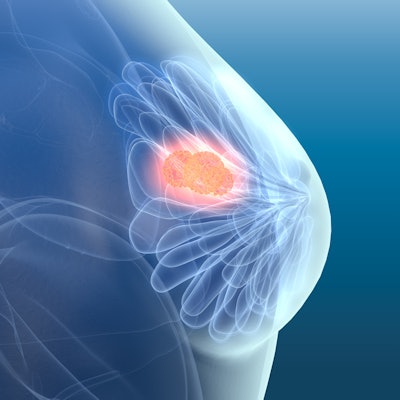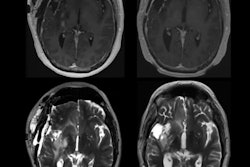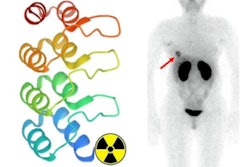
Radiomics features on dynamic contrast-enhanced MRI (DCE-MRI) exams can enable noninvasive predictions of the risk of breast cancer recurrence, according to research from Memorial-Sloan Kettering Cancer Center (MSKCC) in New York City.
The researchers developed a radiomics model that yielded a high degree of correlation with the Oncotype DX genomic cancer recurrence risk scores, according to Dr. Carolina Rossi Saccarelli. She presented the findings during a presentation at ECR 2021.
"Our preliminary results indicate that radiomics analysis allows a non-invasive identification of high-risk patients -- the ones who will really benefit from chemotherapy -- with a high sensitivity," Saccarelli said.
The researchers sought in their study to correlate breast MRI radiomics features and Oncotype DX recurrence scores in patients with early-stage invasive breast cancer.
"Although effective, genetic analysis such as Oncotype DX is invasive and expensive, which has motivated the investigation of imaging analysis to determine radiomics features [that] could replace invasive procedures in the future," Saccarelli said.
Their retrospective study included breast cancer patients with luminal subtype (ER-positive/HER2-negative), axillary node-negative, early-stage breast cancers. All subjects in the study had an available Oncotype DX recurrence score and had received a pretreatment multiparametric breast MRI exam between November 2016 and September 2018. Patients were excluded if the MRI was deemed to have insufficient image quality for radiomics analysis, she said.
The MRI radiomics signatures were extracted from 3D segmentations of tumors captured on the first postcontrast T1 sequence.
The researchers used the following Oncotype DX recommendations for stratification and analysis:
- Low risk of recurrence (considered to have little to no benefit from chemotherapy): < 50 years old and an Oncotype DX score of < 26, or ≤ 50 years old with an Oncotype DX score of < 16
- Intermediate risk of recurrence (chemotherapy may be offered): ≤ 50 years old with Oncotype DX score ranging from 16-25
- High risk of recurrence (should be considered candidates for chemotherapy): Oncotype DX score > 26
Of the 175 tumors in the study, 87 were categorized as low risk, 67 were intermediate risk, and 21 were high risk based on the Oncotype DX recommendations. The radiomics analysis initially produced 101 parameters, but the researchers achieved better results after combining the low-risk and intermediate-risk tumors together into one category and comparing those 154 tumors with the 21 high-risk tumors. The researchers then found 11 parameters that showed significant differences between the two groups.
Logistic regression analysis was used to determine the five most important radiomics features to be included in the final radiomics model. In testing, the final radiomics model yielded the following performance in correlating with the Oncotype DX scores:
- Sensitivity: 96.8%
- Specificity: 76%
- Positive predictive value: 80.5%
- Negative predictive value: 95.5%
- Accuracy: 86.5%
- Area under the curve: 0.87
Saccarelli noted that the researchers are now validating the results of this initial work in an ongoing study with larger patient numbers.




















